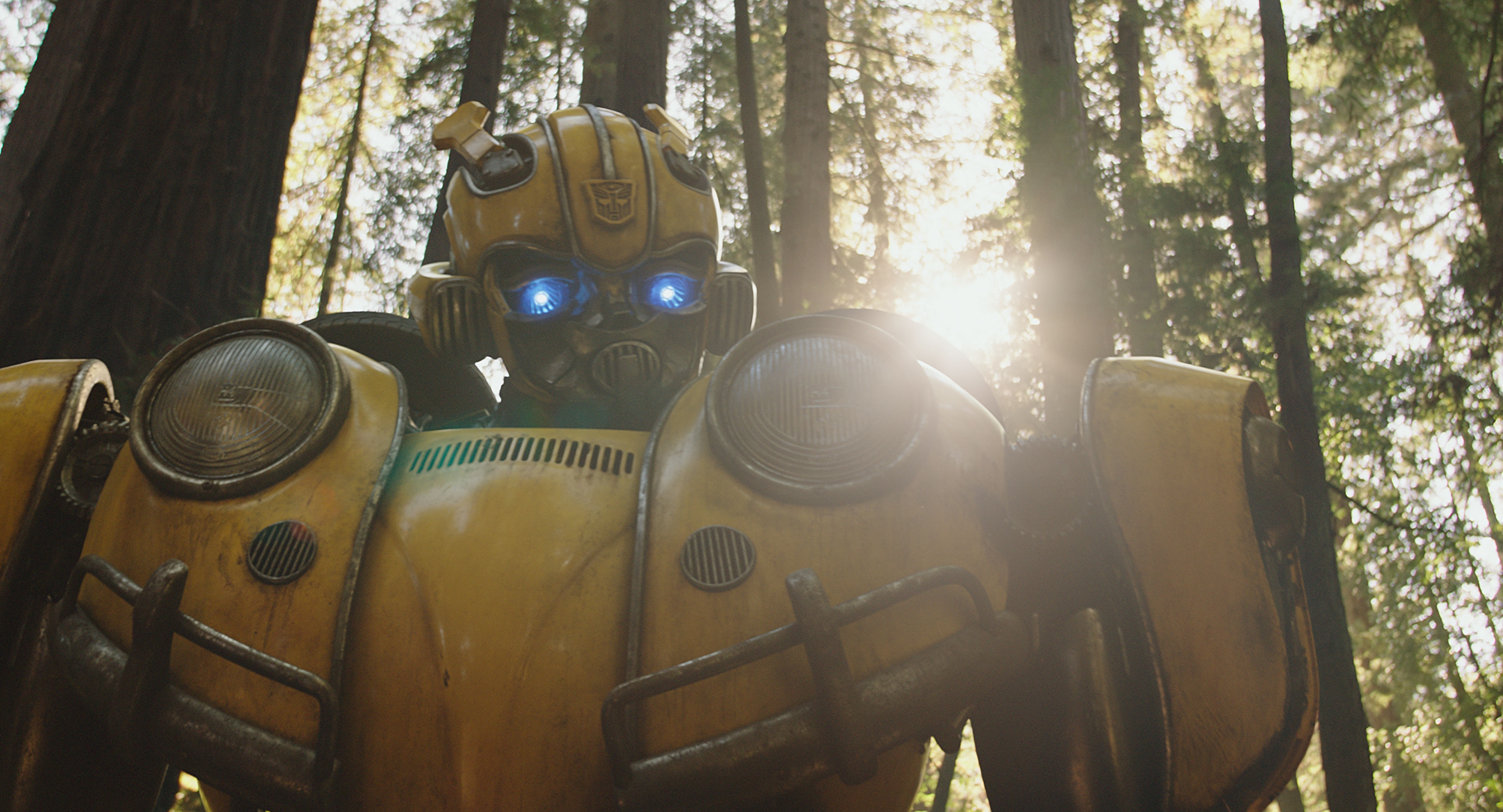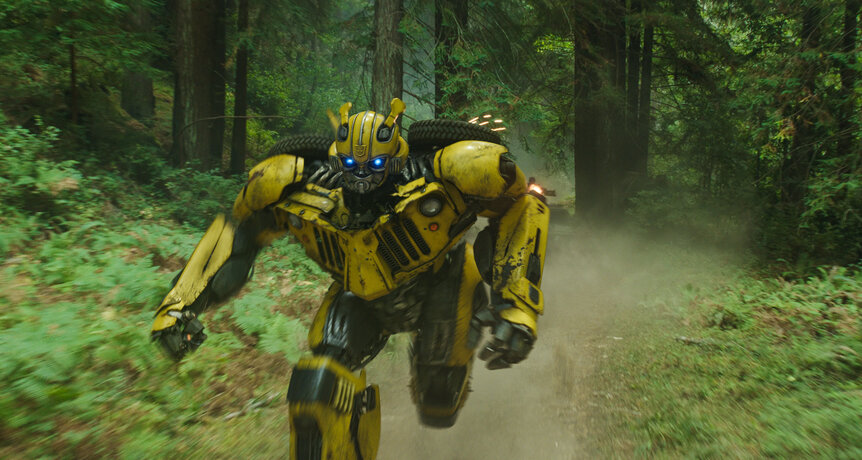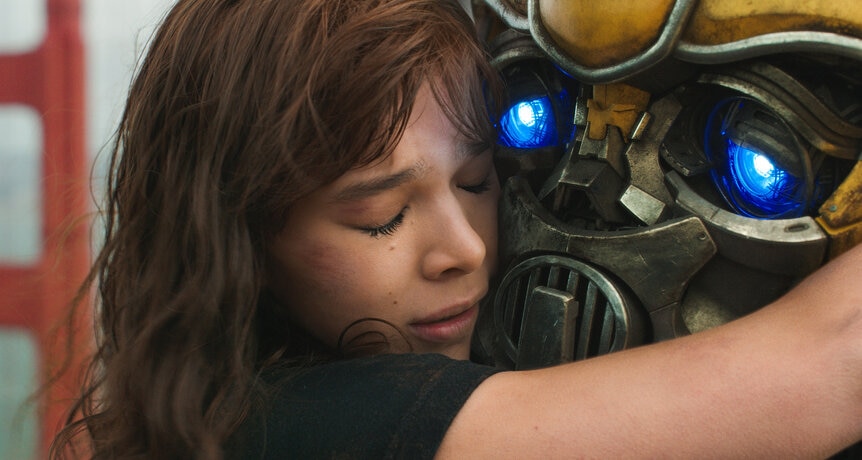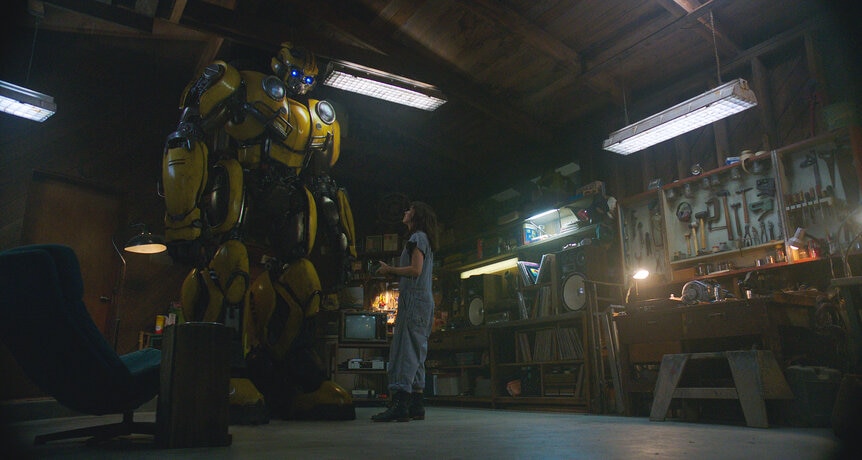Create a free profile to get unlimited access to exclusive videos, sweepstakes, and more!
ILM's Scott Benza reveals how robot blinking, Cybertron choices and more made Bumblebee a winner

When Paramount announced in 2016 that the Transformers franchise was getting rebooted in a non-Michael Bay directed standalone spin-off, Bumblebee, a good contingent of the fandom sighed with relief. Many believed that their beloved robot characters had been reduced to mega-slick Rock 'Em Sock 'Em Robots lacking any emotional depth. So, hearts fluttered more when Travis Knight (Kubo and the Two Strings) was enlisted to direct. As it rarely happens with retoolings, the changes actually worked as Bumblebee earned $459.5 million in worldwide box office, and the most positive ratings for any live-action Transformers movie.
Behind the scenes, the new focus on character-based storytelling also reinvigorated the visual effects teams responsible for bringing the Autobots and Decepticons to photo-realistic life. Maybe surprisingly to some, the majority of the same artists and animators who worked on all of the previous Transformers films also worked on Bumblebee. As Academy Award nominee and Bumblebee ILM animation supervisor, Scott Benza, explains to SYFY WIRE the whole film represented for the VFX teams an opportunity to realize the Transformers in a way they never thought would happen.
When did you and your teams know that you would be involved in this franchise overhaul?
It was probably when they announced who the director was for the Bumblebee spinoff movie. It was a refreshing choice, at least in my opinion, that was pretty much the antithesis of Michael Bay. So, we went into it really optimistic that we'd get a chance to do something almost a 180 from what we were doing before, but still had the benefit of all the history of the franchise to help steer the director in directions that would be useful to him. We could let him know how we do transformations and the best way to shoot them, and how much time they take to do, and things like that.
What was the biggest change that Knight brought to the table in terms of his approach?
Travis sat me down at the very beginning of the production and talked about how he wanted people to be talking about Bumblebee's performance as a character, not Bumblebee as a nicely executed digital effect. Coming from digital effects, usually what we are working on is to create trailer shots and big set pieces and things that are not as story driven as we'd hoped. So, to be able to focus on acting choices and, surprisingly, have a cast of robots that was a small fraction of what we're used to dealing with, was good news for us since we spend so much time trying to get a single robot looking good, defining their performance as who they are as a character. To be able to not do that with 30-plus robots and instead just focus on a small handful of them, mainly Bumblebee, was a great opportunity for us to really get our heads around what the character is going to go through over the course of the film. Where he's going to start, what he's going to learn, and then eventually become the character that we're all familiar with in the other films of the franchise.
Bumblebee is so endearing and vulnerable at times. Most people assume that there’s a motion capture performance at the heart of that?
We didn't use very much motion capture at all, so most of the performances that you see in the film are based on the animators themselves acting in front of a camera pointed at themselves. We felt that was the way to get the look that Travis was after, coming from his stop motion background where you don't have movement for the sake of movement. B doesn't just mill, which is a term we use meaning he doesn't just shift his weight and move around in the background of the shot. Travis felt like that's just drawing attention to himself when the focus needs to be somewhere else in the shot. Whereas, if you were to go to the motion capture, you do see a lot of ambient movement that can sometimes be distracting. So, every motion that Bumblebee does was intended to have some sort of thought process behind it.
As animators, what did you lean on so the voiceless Bumblebee could convey so much personality?
In order to deliver the performance that we needed, it was all told through his eyes. His eye darts — or blinks — Travis wanted to use very sparingly on the film. If you go through the movie and watch, I doubt that there are more than seven blinks in the entire movie. Travis feels like anytime you close the eyes, you're blocking off a connection to the soul of the character. So, if he’s going to blink, there has to be a justification for it.
But in order to convey the performance that we're after, you'd be surprised how much storytelling you can do with just the combination of subtle head turns, blinks, eye dart, and how long all of those events take. If Bumblebee is staring at Hailee (Steinfeld) in the scene intently, you're conveying that he is listening closely to what she's saying. If he darts his eyes away once, typically that means he's processing what she's saying. And then, if you have him look away, and scan the room a couple of times, that means he might be conflicted about what she's telling him, and then depending on how long it takes for him to dart his eyes back to her, he could either understand what she's saying, or be looking for more information. All of those very subtle, nuanced movements really go a long way in delivering a performance for a character. We found it was almost surprising how many different performances you can get out of a character just by changing very small nuances of his performance with his eyes. So, it was great to have the camera up close to be able to register all of those micro movements that Bumblebee used to help convey this emotional performance that we were going for.
What really sold the performances between Hailee’s Charlie and Bumblebee so you felt an emotional connection between them?
There's two very important aspects of it. There's the physical connection which has to be thought out and planned ahead of time so that when you shoot the footage, you need to have some kind of stand in for Bumblebee, physically, for Hailee to interact with. They did build a full-size head and torso for Bumblebee that had some interactive lighting on it that she was able to act with, and physically touch. We also had her acting partner on set as a stand-in for Bumblebee so there would be emotional connecting moments.
Then back in post-production, when we needed to create that emotional connection between the two of them, we looked at that acting stand in, who was a pretty phenomenal actor himself. And then, Travis would constantly have us mirror what Hailee was doing in those scenes. In this movie, Travis referred to Bumblebee as a mimic. He lost his memory at the beginning of the film, so a lot of what he does is just mimic what he sees around him. So, if Hailee was making certain acting choices, or had a certain emotional delivery, then Travis wanted to pull some of those acting choices that she was making and apply them to Bumblebee.
What sequence in the film was the most personally satisfying to you?
The scene in the garage is a special one for me, because, not only is Charlie meeting this new Bumblebee that we haven't met before, it was also the first sequence that we worked on in the film. In a way, it was the animators and Travis getting to know each other and working out the process of how we were going to create this character's performance. It was very important to get that scene right, because it set the precedent for the rest of the film as to how this was going to go. It was great to earn Travis' confidence early on. We were all a little bit unsure about having him work with a team of people, who for 20-plus years had this shorthand with one another. So, having him work with an entirely new team doing animation was a little intimidating at first, but we got through it. He was happy with how that scene came together, and I think we earned his confidence there.
Let’s talk about that opening Cybertron sequence which was really the old school fan wish-fulfillment moment of the movie.
Everybody loved that scene at the beginning of the film. It came at the end of production. And even though it was a daunting amount of work to do in very little time, it was a real treat for people because of how passionate they are. There's quite a few people at ILM that feel, in much the same way that the fans do, that they love to see these childhood characters that they grew up with realized on the big screen in a way that we haven't seen before. The robots look very similar to how the toys were designed, with many fewer panels, but the design aesthetic has some aspects of the previous films. We didn't it want it to feel completely different. But yes, it was very much designed to look like the G1 version of the characters that we know and love.
Did you have any say in the final collection of characters that ended up in the sequence?
Yes. Being able to sit in meetings with the director and decide which of these fan favorite characters that the fans are going to want to see was a wonderful opportunity.
And once we had our cast picked out, it was then time to pick actions that we would like to see them do. We definitely wanted to see Soundwave appear, but then do we want to do Laserbeak or do we want to do Ravage? We picked Ravage, the panther character, to be featured. It was a ton of fun being able to do that, and see Bumblebee in his Cybertronian form. Bumblebee has like four different looks in the film. The grandmas in the audience might not notice the difference because the look is very similar for all of his different forms, but if you look at the geometry on his chest, he's got something different on Cybertron. Then, when he arrives on Earth, he's in jeep form. Then, he's got the Volkswagen through the majority of the film, and at the end, he's got the Camaro.
As a team, you always have something to prove to yourselves as artists. Having been with this franchise for so long, what was it?
I think we were all looking forward to the opportunity of showing a new set of filmmakers that we are not a team of people that can be pigeon-holed. We wanted eliminate any assumptions that even though we worked on a particular style for the previous films, that we were able to adapt to something completely new and different. A lot of them did work on the previous four films, but it does feel like Bumblebee was done by a completely different set of people, which is a testament to how diverse we're able to make the work look. It's our job to execute the director's vision no matter what it is, and I think we were able to do that on this film.
Bumblebee is available on Digital March 19 and Blu-ray/DVD on April 2.





























